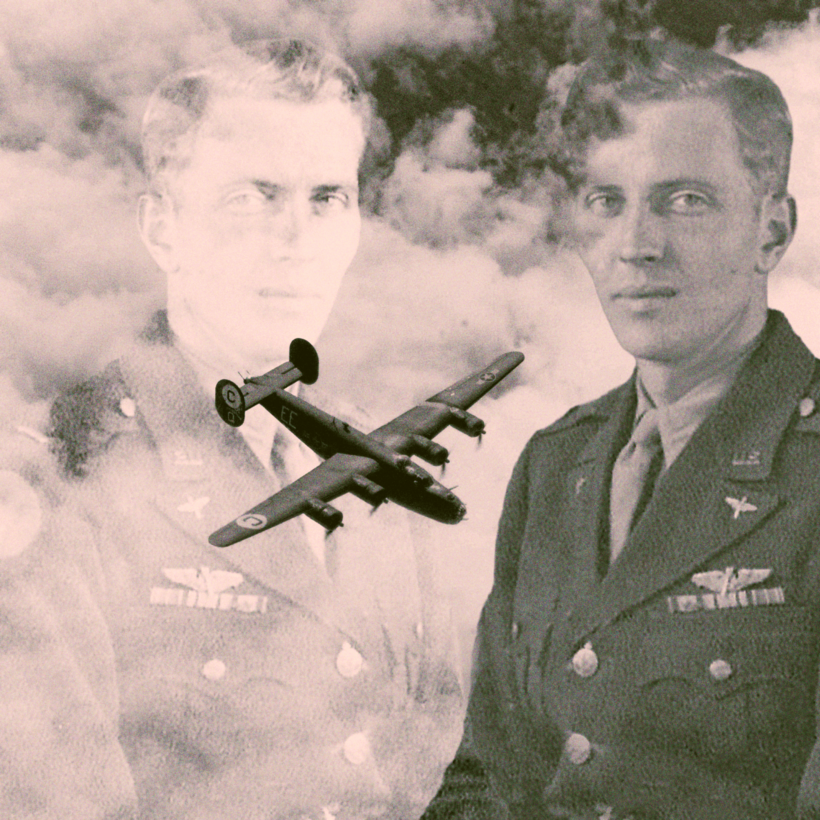As an author of World War II nonfiction books, I am continually amazed by how many “untold” stories are still out there about a war that ended 80 years ago. This is especially true given that of the 16 million Americans who served in that war, less than 40,000 (or 0.125 percent) are still living; a number expected to halve by next year.
In my new book, Midnight Flyboys, I relay another of those underreported yet incredible stories—this one about a group of U.S. B-24 airmen ordered to “forget everything you saw and did” before going home at war’s end. Many did not tell their families what they did in the war. Not until 50 years later, when the wartime files of the O.S.S.—predecessor to the C.I.A.—were declassified, did the aging veterans feel free to talk about their cloak-and-dagger missions over Nazi-occupied Europe. By then, many of their brethren, still following orders, had gone to their graves, tight-lipped to the end.
One of the flyboys was Army Air Force First Lieutenant John B. Mead, whose exploits earned him two Silver Stars for “gallantry in action” and cry out for cinematic attention whenever Hollywood takes a breather from comic-book crusaders and is ready for a real hero. Born in Jacksonville, Florida, to a large, upper-middle-class family, Mead left college short of graduation to learn the marine-insurance business in New Orleans. In March 1942, three months after the U.S. entered the war, he enlisted. Following basic training, he went to flight school in California. In November 1942, he was designated a bombardier and joined a B-24 squadron. By fall of 1943, the squadron was in England, part of “Operation Carpetbagger,” a top-secret collaboration between the Army Air Force, the O.S.S., and its British counterpart, S.O.E., to arm, organize, and strengthen French Resistance forces before and after D-day by delivering what they needed by parachute, as well as dropping Allied agents and spies behind enemy lines.
Following a whirlwind of briefings, Mead and his crew began flying midnight missions in all-black, unmarked B-24s so as not to be spotted by the enemy as they dropped to nearly treetop level to parachute munitions, supplies, and agents into fields lit with signal lights where partisans waited. As the bombardier on a plane without bombs, Mead helped locate the drop zone and released from the bomb bay the dozen containers filled with vital materiel.
Mead had completed 20 such missions when, on May 6, 1944, his plane, piloted by Second Lieutenant Murray L. Simon, went missing over France. Two weeks later, another Carpetbagger crew was on a nighttime mission over central France when its radioman established contact with partisans on the ground via a two-way radio. He was surprised to hear a distinct southern drawl rather than a French accent.
“Who are you?” asked the radioman.
“This is Johnny Mead! Tell all the guys howdy!”

His squadron-mates back in England heard nothing more about Mead until July 4, when a wireless telegraph message came over one of the circuits from the French underground, mentioning that a “Lt. Mead” was in command of a group of partisan fighters in the northern region of Normandy.
Two months earlier, Mead had parachuted from the Simon crew’s burning B-24, which had been attacked by an enemy fighter, landing shaken but unharmed in a field near Chenay-le-Châtel. The rest of his crew had made it out safely, too, although in the dark none of them had found each other and several ended up being captured by the Germans. Using his rusty French to make contact with the Resistance, Mead soon met a British agent named Victor, who helped organize and distribute the arms and supplies to local partisans. Plans were put in motion for Mead to be taken via an escape route through the Pyrenees into neutral Spain, then back to England. But before he left, Victor explained he was short-handed and asked if the American would be willing to stay and help out. Mead said yes, but asked that a message be sent to London seeking approval. They received a response that contained Mead’s service number: “Regarding 0733073. Keep him.”
From then until the liberation of France, flyboy Johnny Mead was attached to the Resistance to fight a different kind of war on the ground. During that time, he led raids and ambushes, and once escaped certain capture by swimming powerfully across the river Loire. After D-day, his Resistance group blew up assigned bridges, telegraph lines, and key railroad tracks and switches to impede German reinforcements heading toward Normandy.
In November of 1944, three months after the liberation of Paris, Mead returned home to Florida. During a short furlough granted prior to his assignment as a Stateside instructor at bombardier school, he accepted the invitation of a local civic group to speak at a luncheon. He “touched briefly on some of his experiences,” according to a newspaper account, before he lowered his head and noted somberly, “the glamour passes after a few combat missions, and the war then becomes a grim business.”
Bruce Henderson is an American journalist and author

